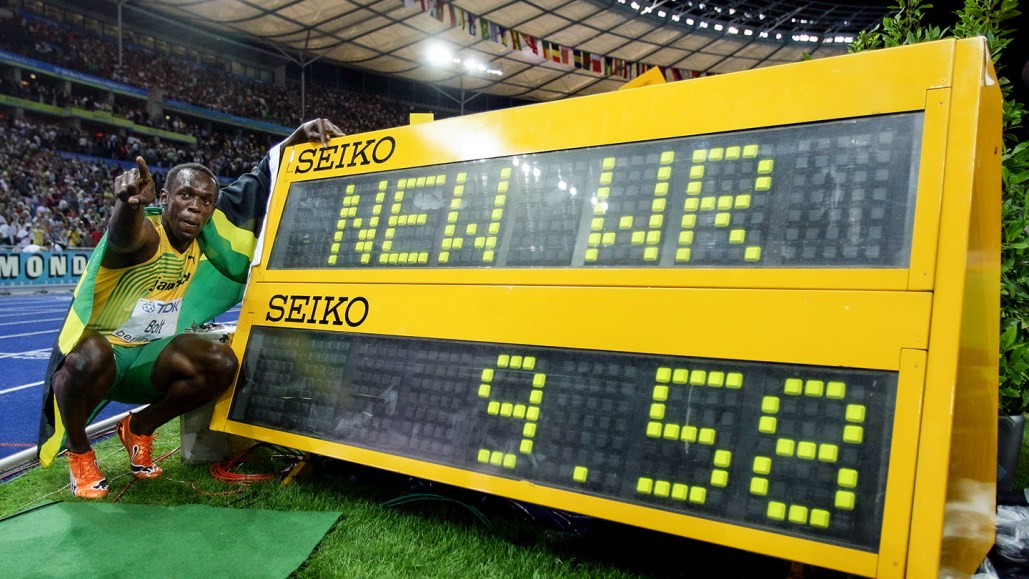Olympic Speed Records: Tracking the Evolution of Faster Performances

Ready, set, go break a record.
As elite athletes compete for top accolades in the 2024 Summer Olympics in Paris, at least a few world records will undoubtedly fall. But some of the Olympics’ speediest events — the 100-meter dash and the 50-meter freestyle swim — haven’t picked up the pace in more than a decade. Though records are made to be broken, how much faster humans can go on land or sea is an open question.
Science News has partnered with Trusting News to gather feedback on the potential use of AI in journalism. Currently, we do not publish any content produced by generative AI (see our policy). We do want to hear your views on how Science News could use AI responsibly. Let us know by participating in a short 10 question survey.
On land, records in the 100-meter dash have been in place since 2009 for men and 1988 for women. Jamaican sprinter Usain Bolt ran the race in just 9.58 seconds with a top speed of nearly 40 kilometers per hour, beating his previous world record by just under a tenth of a second (SN: 11/20/09). Meanwhile, the women’s record is held by American sprinter Florence Griffith Joyner, who completed the distance in 10.49 seconds.
Times for the 100-meter dash have gone down by about a second for men since recordkeeping began in 1912. Women are running the race about three seconds faster since the first record was set in 1922. Though Florence Griffith Joyner is the current women’s record holder, the record is in doubt. Winds over 2 meters per second disqualify new records. The wind gauge registered 0, but other races that day had logged winds. Still, the record stands.
Starting in 1968, some record times were oddly higher than earlier ones. That reflects a transition to electronic timing, with precision to a hundredth of a second. Previous manual times were rounded to the nearest tenth of a second.
Based on human gait and our muscle strength, research suggests that people might be capable of running as fast as roughly 60 km/h. That’s 100 meters in 5.625 seconds. But the realities of sprinting speed largely depend on technique, says Ross Miller, a biomechanist at the University of Maryland in College Park.
“A sprint should be as hard as you can every step,” Miller says. “Maximum, instantaneous effort all the time.” Top speed depends on how little time our feet need to come in contact with the ground while still applying the force necessary to propel us forward.
It’s possible that no one has yet run at maximum speed because no one has come along with the physical ability, Miller says. Or it could be because the right person hasn’t had access to the training, or hasn’t “put it all together yet in the perfect race.” In the past century, the fastest time for the 100-meter dash has shrunk by one second for men and about three seconds for women.
It’s much harder for humans to go fast in water. In the 50-meter freestyle, the men’s record belongs to César Cielo Filho, a swimmer from Brazil who swam the pool’s length in 20.91 seconds in 2009 — just under one-quarter of Bolt’s record-setting average running speed. In 2023, Swedish swimmer Sarah Sjöström swam the race in 23.61 seconds to earn the women’s record. Both top times are roughly three seconds fewer than the first records set in the 1970s.
World record times for men and women in the 50-meter freestyle have gone down by about three seconds since recordkeeping began in the late 1970s. A wave of new records came in 2008 and 2009, when a new swimsuit line manufactured by Speedo entered pools. The expensive fabric compressed swimmers’ bodies and also made them more buoyant, giving swimmers who wore them a speed advantage. The suits were banned from competition in 2010.
Swimming is slower than running largely because water is far denser than air, says Timothy Wei, a fluid dynamist at Northwestern University in Evanston, Ill. But also, “we all have this bowling ball between our shoulders. And this thing creates a huge amount of drag.”
For swimming speed, it’s unknown how much room there is for growth. Swimming with the body parallel to the water’s surface can help eliminate the drag on our less-than-ideal frames. Superfast freestyle swimmers also raise their elbows as high as possible above the water, plunging their arms dramatically close to perpendicular with the water to pull themselves forward.
“If you get your technique right, and you can get your stroke rate as high as possible,” Wei says, “that combination is what’s going to get you to go as fast as you can.”
Questions or comments on this article? E-mail us at [email protected] | Reprints FAQ
Erin I. Garcia de Jesus is a staff writer at Science News. She holds a Ph.D. in microbiology from the University of Washington and a master’s in science communication from the University of California, Santa Cruz.




